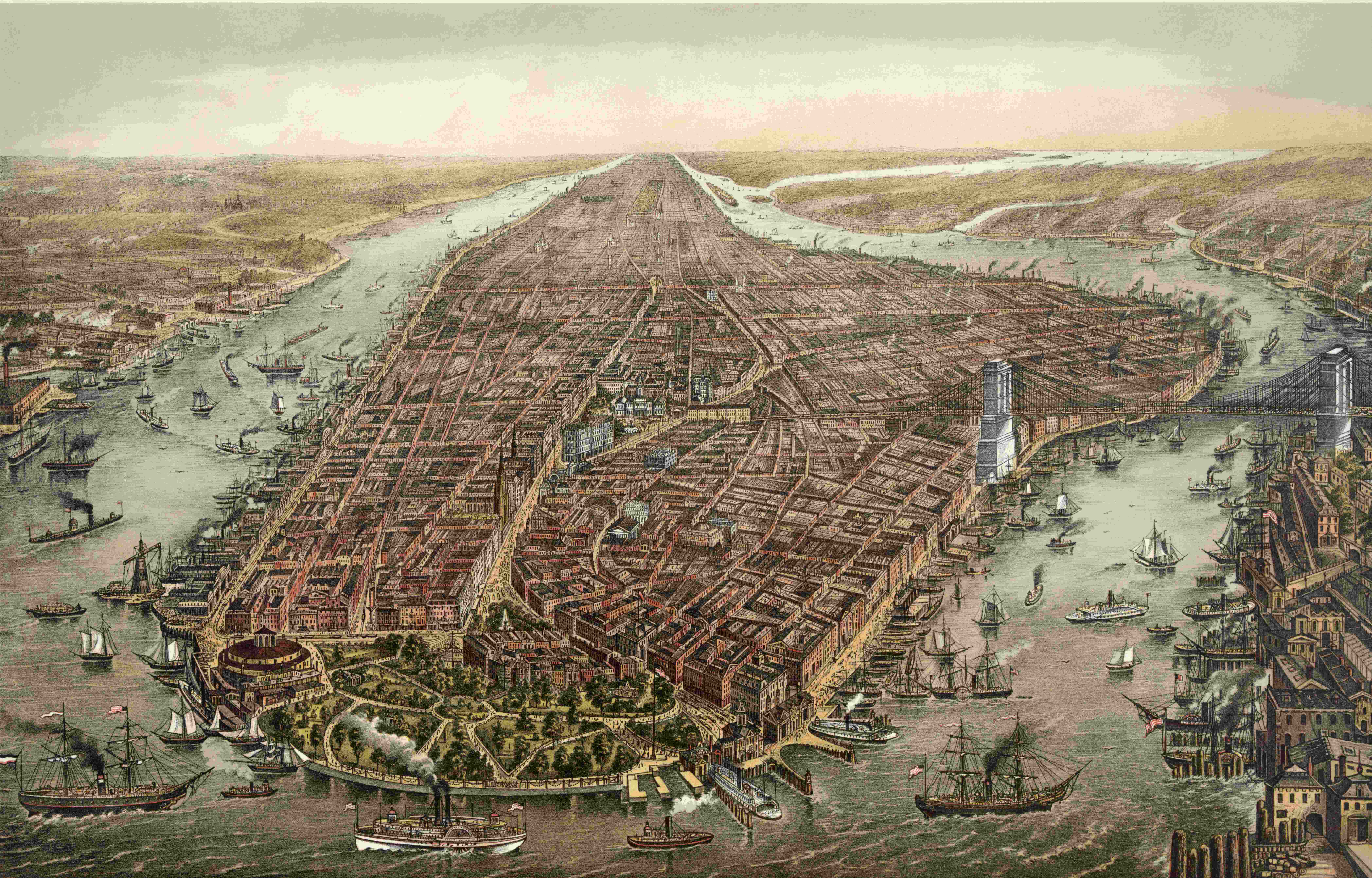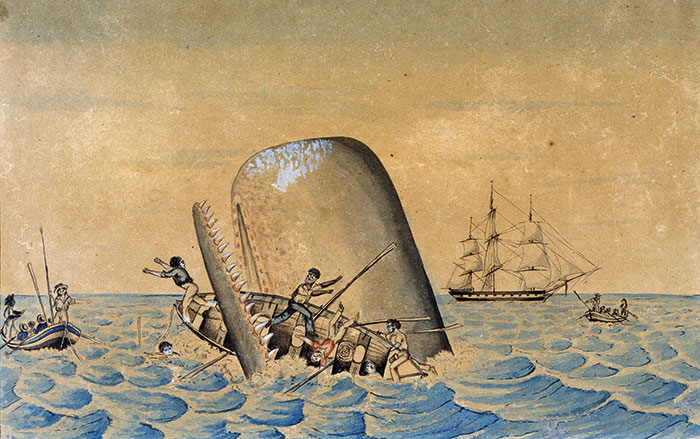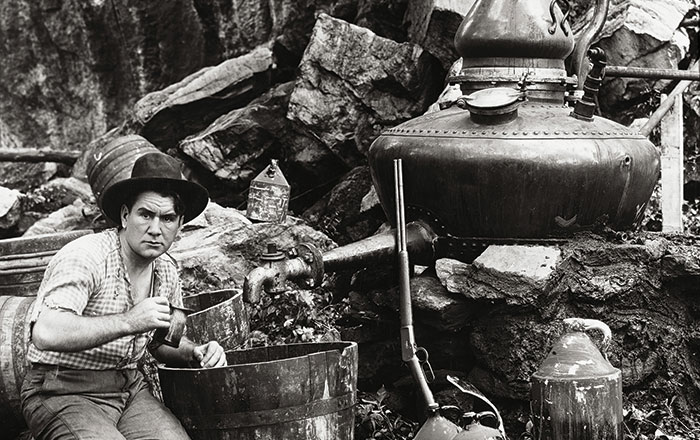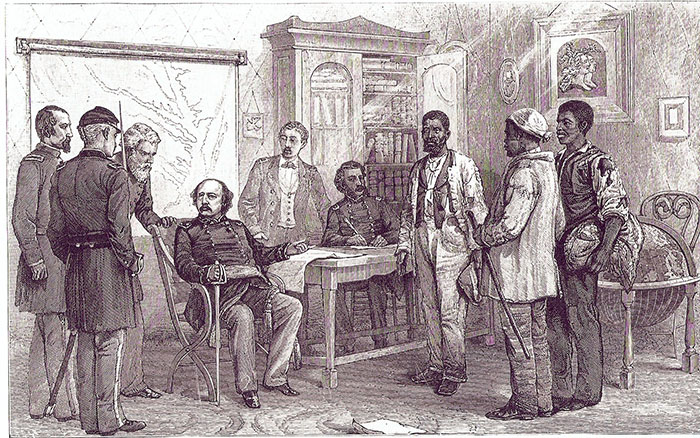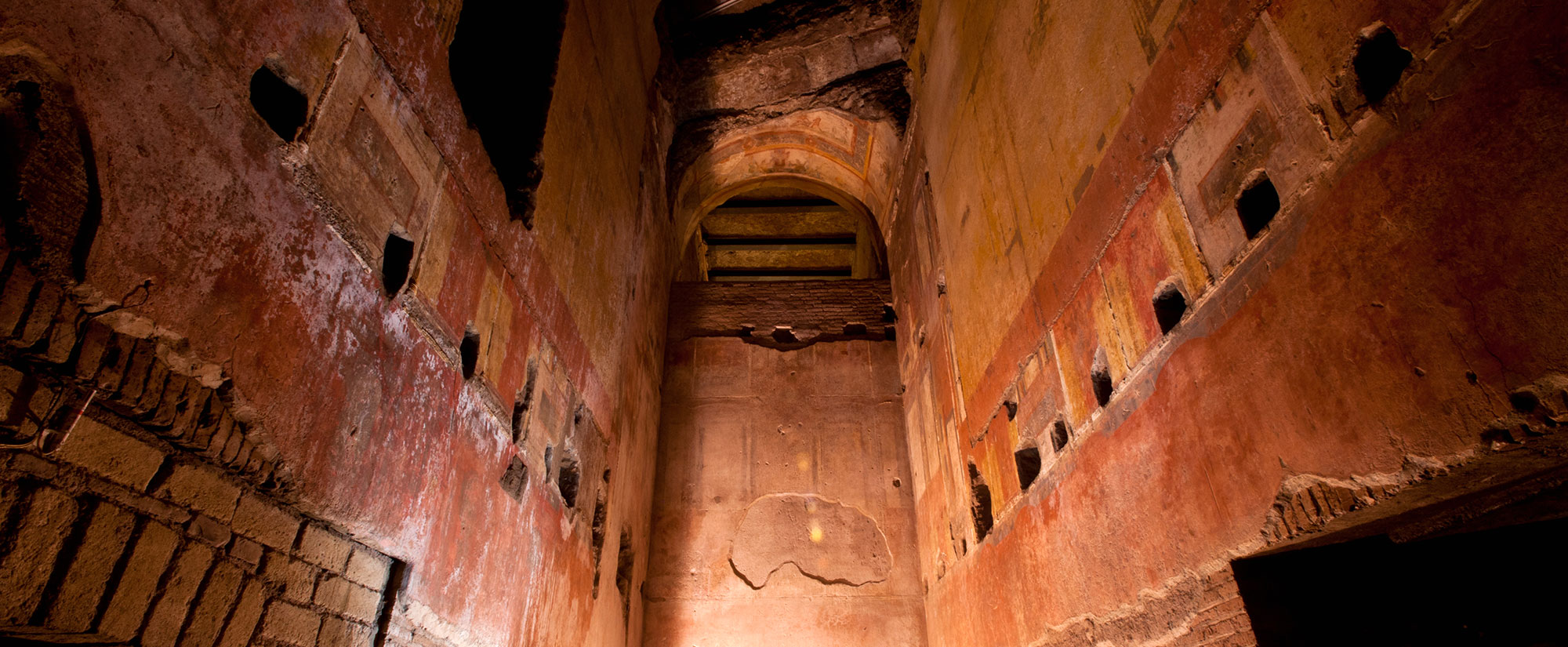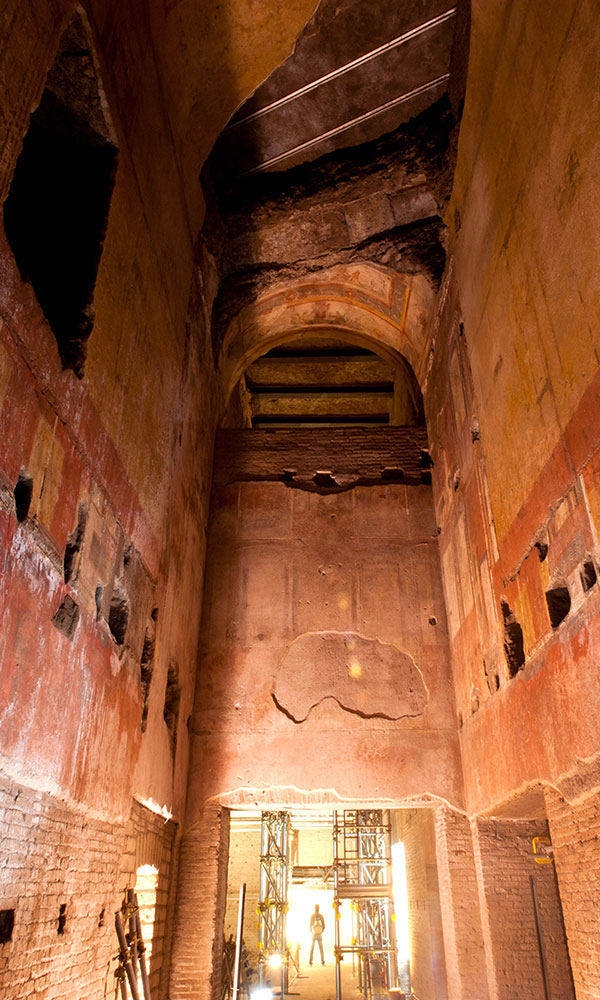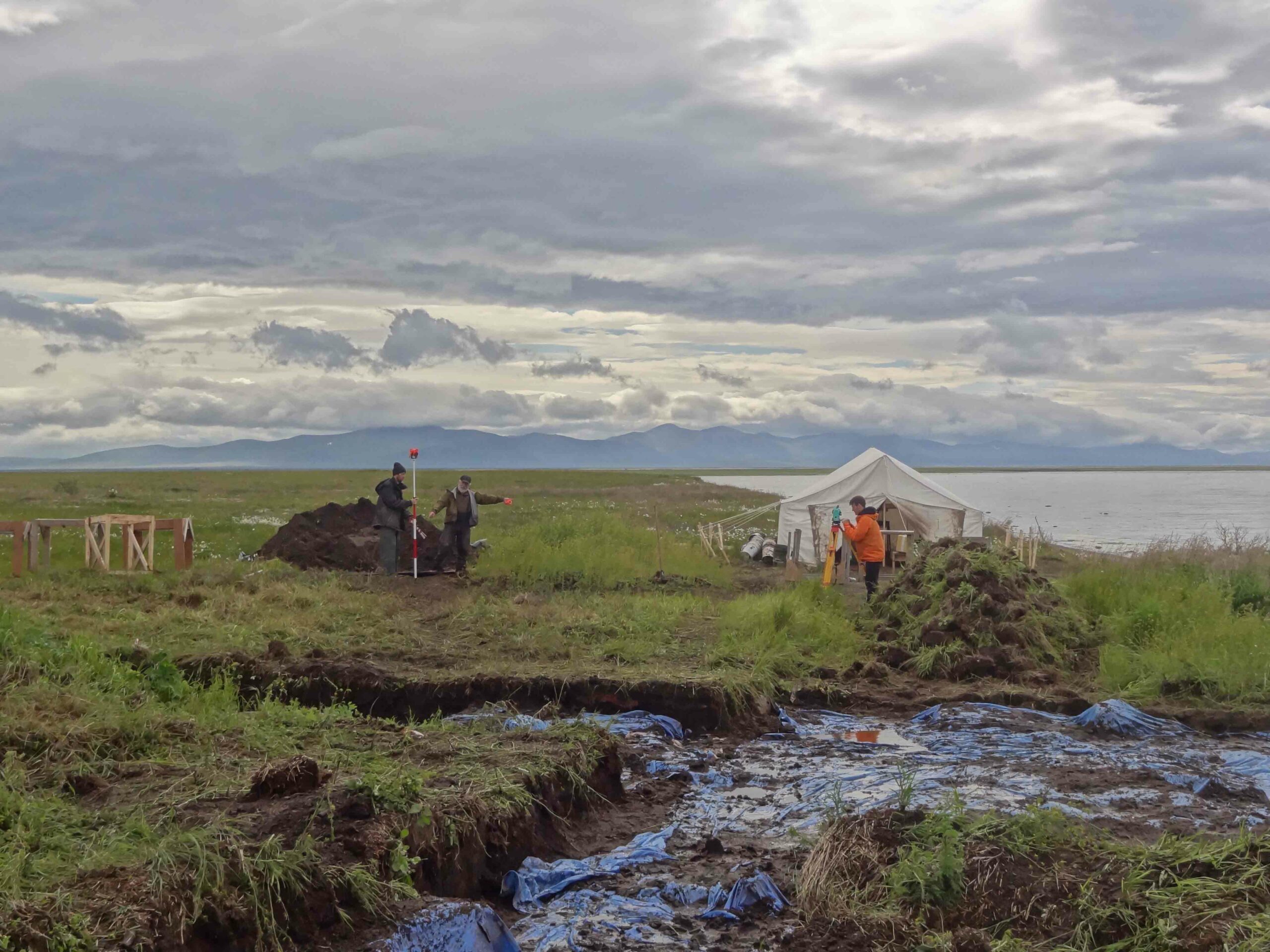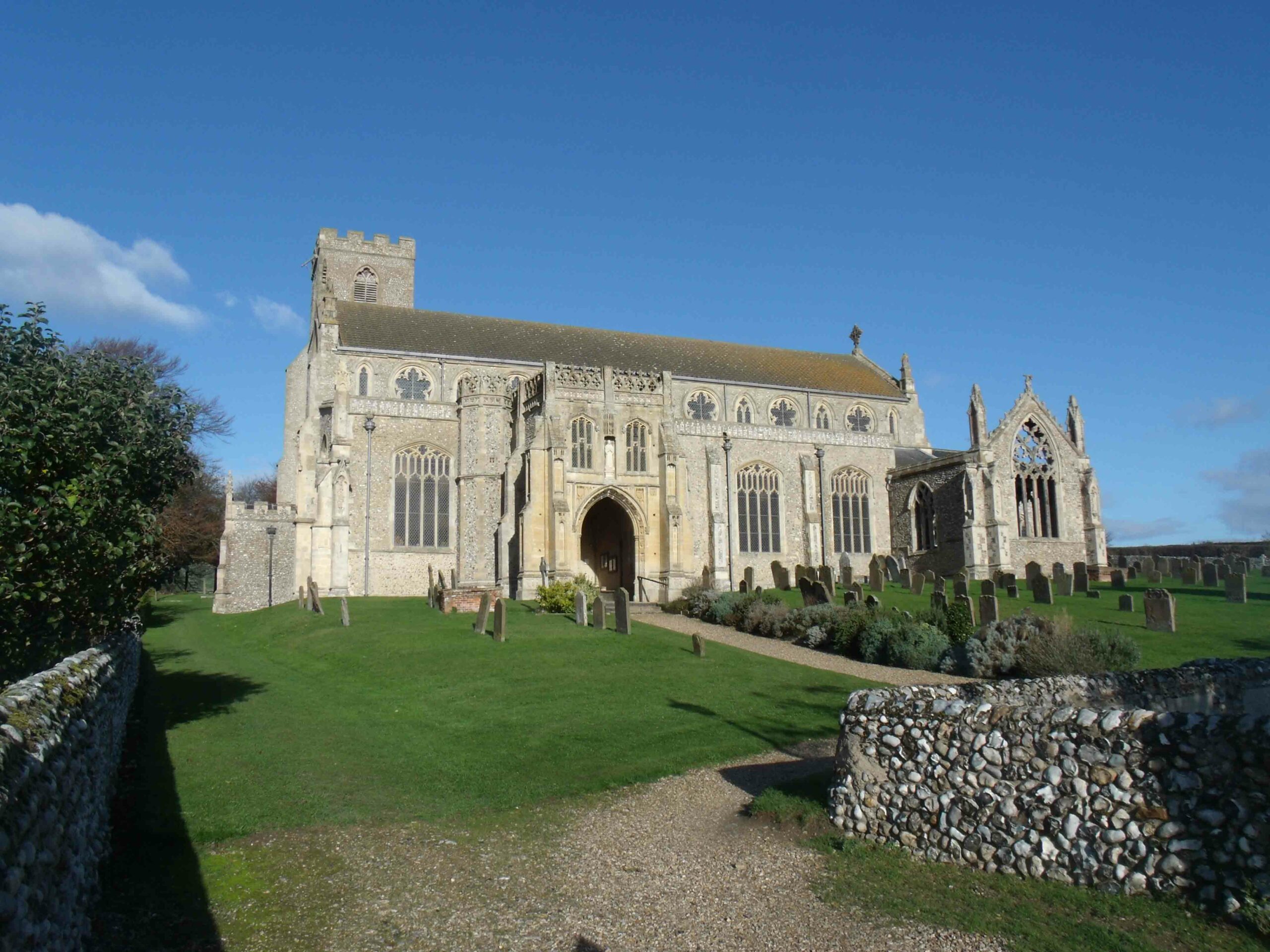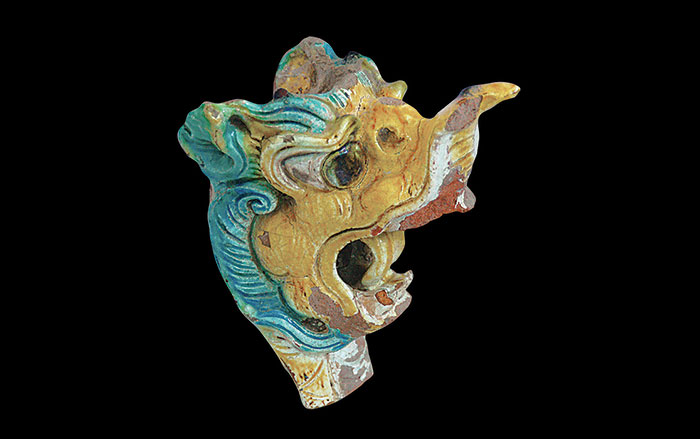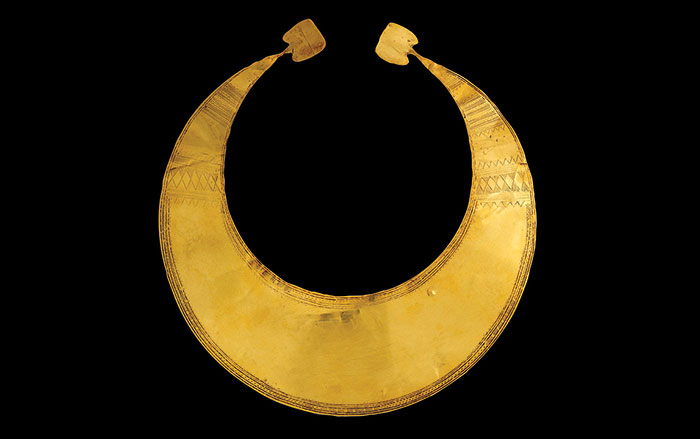Over the past 250 years, perhaps no stretch of land in America has undergone greater transformation than Lower Manhattan. Today, its shoreline barely resembles what the earliest Dutch immigrants encountered in the 1600s. The labyrinthine canyons formed by block after block of modern skyscraper construction were once an idyllic setting of small hills, streams, and wetlands. Lower Manhattan is a palimpsest on which each new era has written its own physical history. With the help of archaeology, it is occasionally possible to reconstruct those faintly visible landscapes of the past. The South Street Seaport is located along Lower Manhattan’s eastern shore, near the place where the East River meets the top of New York’s magnificently sheltered harbor. Today it is a tourist-friendly destination with shops, tour boats, and restaurants, and serves as a refuge from the bustle of neighboring Wall Street. No other place epitomizes the growth and transformation of Manhattan in the eighteenth and nineteenth centuries more than the South Street Seaport, when it was the busiest port in the United States.
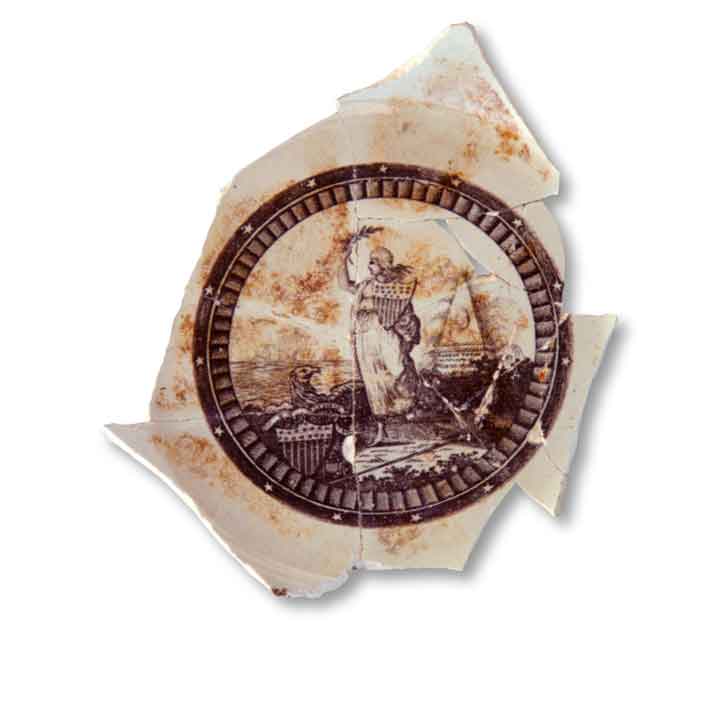
The 11-block area right around the Seaport, nestled in the shadow of the Brooklyn Bridge, has recently been the focus of a city-led initiative to improve its utilities and infrastructure. The city has long hoped to stimulate the neighborhood’s commercial, residential, and touristic appeal, most recently after it was devastated by a seven-foot storm surge during 2012’s Hurricane Sandy. The initiative includes installing new curbs, resurfacing the streets, and maintaining and replacing damaged subterranean utility lines. All of these projects permit and, in fact, require that archaeologists be brought in prior to the work. Alyssa Loorya, founder of Chrysalis Archaeological Consultants, is one of the archaeologists contacted by city officials to evaluate sensitive areas slated for construction. Over the past decade her team has excavated areas along Fulton, Front, Beekman, Water, and Pearl Streets, as well as extensive sections of Peck Slip. “We have covered pretty much every block in the historic district that has been excavated since 2005,” she says. “It’s been really nice to get a whole little picture of the way this area developed.”
Almost none of the land where Loorya’s team has worked existed when the first Europeans arrived in New York Harbor. The original Manhattan shoreline coincides roughly with the line of present-day Pearl Street, three blocks inland. The land associated with Water, Front, and South Streets, which form the backbone of the South Street Seaport, was completely created by human activity. From the late 1600s through the early 1800s, Lower Manhattan’s shoreline gradually crept farther into the East River as part of a deliberate landfilling process. Land, especially waterfront land, has always been at a premium in New York, and it was no different during the city’s early history. The real estate created for the South Street Seaport was extremely valuable, especially to the merchants, ship owners, and shopkeepers responsible for its growth.
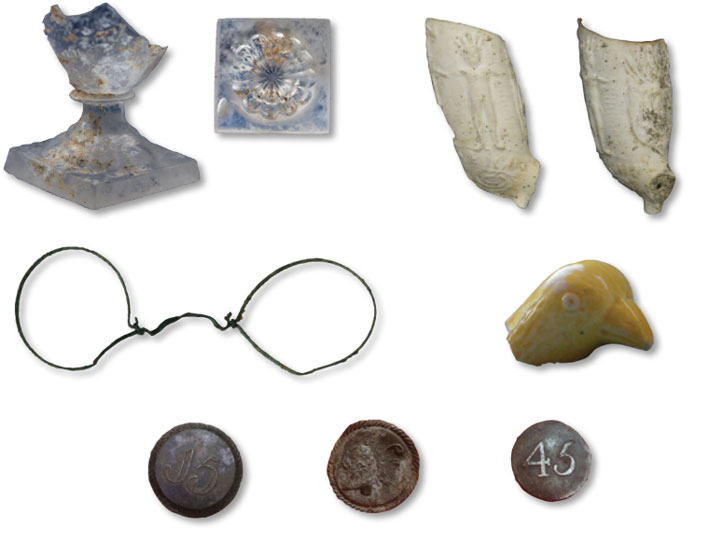
The transformation of the East River waterfront was stimulated by the Dongan Charter of 1680. This allowed the city to collect revenue by selling “water lots,” designated sections of river adjacent to the shoreline. The Dongan Charter originally allowed for the development of an area extending 200 feet into the East River, a distance that was doubled to 400 feet by the Montgomerie Charter of 1731. Water lot purchasers were encouraged to, at their own expense, construct wharves, deposit landfill, and erect buildings on their lots. Lot by lot, the river was supplanted by land and fitted with warehouses, offices, and shops related to the burgeoning shipping industry. As the shallow waters of the original shoreline were eliminated, ships loading or unloading goods in New York no longer needed to anchor offshore and transport goods via smaller boats. They could now dock immediately landside along slips and piers. This new waterfront neighborhood soon became the focus of New York’s mercantile and maritime industry.
Archaeologists working along the Lower Manhattan riverfront over the past few decades have uncovered the methods that colonial New Yorkers used to create new land. The process almost always involved the construction of a wooden retaining device or framework that was sunk into place along the river bottom and filled with debris, gradually forming the foundation for new city streets and blocks. During recent utility work, archaeologists have been able to uncover sections of the colonial timber framing and cribbing in several places beneath the South Street Seaport, notably along Peck Slip and Beekman and Water Streets. In fact, in some places, the 300-year-old bulkheads were still successfully retaining the East River and their removal caused temporary flooding within the trenches. Although the depth of the landfill varies depending upon the original irregular shoreline, it measures between 20 and 35 feet deep in the most extensively filled areas.
In this way, beginning in the late 1600s, the South Street Seaport began to take shape. By the mid-eighteenth century, Water Street had been created, followed by Front Street later in the century, and ultimately South Street by the early 1800s. By the beginning of the nineteenth century, New York and its South Street Seaport had surpassed Boston and Philadelphia to become America’s primary port, and by the 1850s, only London was handling more marine activity.
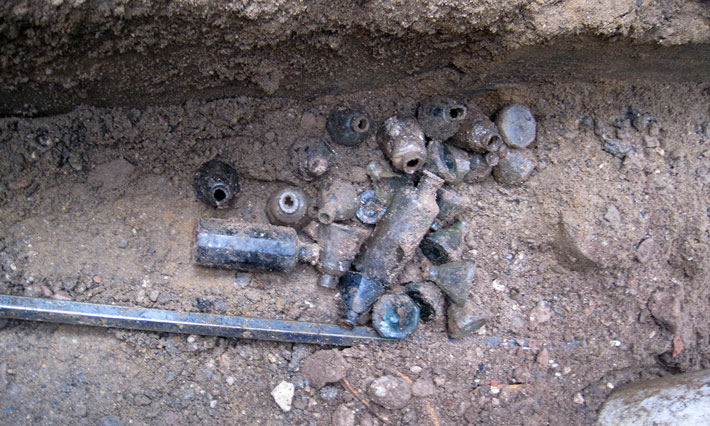
For archaeologists, the layers of landfill deposits have provided a wealth of information about life at the Seaport during the eighteenth and nineteenth centuries. During the landfill process, a tremendous amount of fill was needed in a short amount of time. Owners of the water lots would petition locals to help them with material. Much of what they used, we (and they) would consider garbage. “Even today, New York is still figuring out where to put our garbage,” says Loorya. “[Back then,] there was no garbage pickup, so what do you do with your trash? You dump it in the East River and create land.” The examination of antique garbage is one of the best ways to reconstruct past daily life. Despite the fact that substantial modern construction and utility work carried out over the years has destroyed much of the colonial-era archaeological remains, small pockets of undisturbed fill have helped create an accurate image of the old Seaport. Some trenches provide clues to the Seaport’s creation, while others offer small tidbits of information about the colonial shipping industry and even the origins of certain voyages. In one instance, excavation beneath a section of Beekman Street revealed a large concentration of Caribbean coral, not native to the Northeast. It was likely taken aboard a ship sailing from the West Indies for ballast, and later discarded in the East River as waste. In an area along Peck Slip, among the fill debris, there was a large mass of British-made pottery that was broken but appeared to be entirely unused. Loorya suggests that the high-quality imported cargo was damaged during transit and deposited in the landfill upon arrival in New York.
Since it was impractical for large quantities of fill to be carted in from outside neighborhoods, most of the debris came from nearby shops and residences. This is proving instrumental in reconstructing the urban topography of the Seaport. Loorya discovered that it is possible to map out the locations of certain industries by the artifacts found within localized fill layers. “We find concentrations of a certain type of artifact that may represent a specific business,” she says. In one area, Loorya’s team found more than 600 ink bottles, some still with their ink and labels surviving, which imply a nearby print shop. Other deposits yielded material from butcher shops, ironworks, tanneries, taverns, and pottery shops. This data is supplemented by hours spent researching New York City archives and scouring old newspapers to try to confirm the locations of certain businesses. In many cases, the archaeology beneath the streets can be directly corroborated by an eighteenth- or nineteenth-century advertisement. In one case, archaeologists discovered a large concentration of shoes during an excavation, which led them to theorize that a cobbler had been located nearby. Its existence was verified by an old advertisement for a shoemaker on the same block. One of the things that became clear for Loorya was the diversity and availability of goods. “You look at some of the ads and what they’re offering, and you can get pretty much everything in New York City, even in the eighteenth century,” she says. “Everything was coming in from all over the world.”

What also becomes apparent is that the South Street Seaport wasn’t solely a commercial district, but was also a place where residences and businesses were often intertwined. Wealthy landowners and merchants who were responsible for filling the water lots built homes in the neighborhood. During the installation of a modern electrical line on present-day Beekman Street, archaeologists unearthed a trove of material in an eighteenth-century residence owned by a wealthy businessman, Robert Crommelin. More than 3,000 artifacts were retrieved from a debris layer in the mansion’s basement storeroom. These finds are helping illuminate upper-class life in postcolonial New York. Faunal remains of lamb, turkey, guinea fowl, and oyster shells, as well as liquor bottles, wine bottles, ornate water glasses, and wine goblets attest to the diet and culinary habits, as well as the aesthetics, of the house’s residents. The finer examples of postcolonial ceramics were decorated with floral, willow-patterned, or patriotic motifs. One of the most important artifacts discovered was a plate commemorating George Washington’s death in 1799. The scene depicts an eagle and a female Liberty figure bearing a shield with 16 stars—the number of states at the time of Washington’s death. A pyramid-shaped stela in the background is carved with the inscription, “Sacred to the memory of Washington.” Coincidentally, another excavation just a few blocks away produced a series of Revolutionary War uniform buttons. The six buttons belonged to British soldiers, at least two of whose regiments, such as the renowned 45th Regiment of Foot, had fought and defeated George Washington in the Battle of Brooklyn, the engagement that was instrumental in keeping New York under British control throughout the course of the war.
Not every trench within the South Street Seaport excavations spawned the copious amount of material recovered at the Crommelin estate, but dozens of small excavations have yielded thousands of personal artifacts, including chamber pots, toothbrushes, tobacco pipes, medicine bottles, and shoe buckles, all of which encapsulate daily life during this expansive period in the history of the area. Taken all together, the archaeological evidence offers a close view of a cross section of colonial New York society. The variety of artifacts demonstrates that not only are wealthy merchants and local industries present in the record of the Seaport, but that they exist side by side with sailors, soldiers, immigrants, slaves, tavern-goers, and lower classes. In the city’s early days the Seaport was truly a hub of interaction, where New Yorkers from different backgrounds came together on a daily basis.
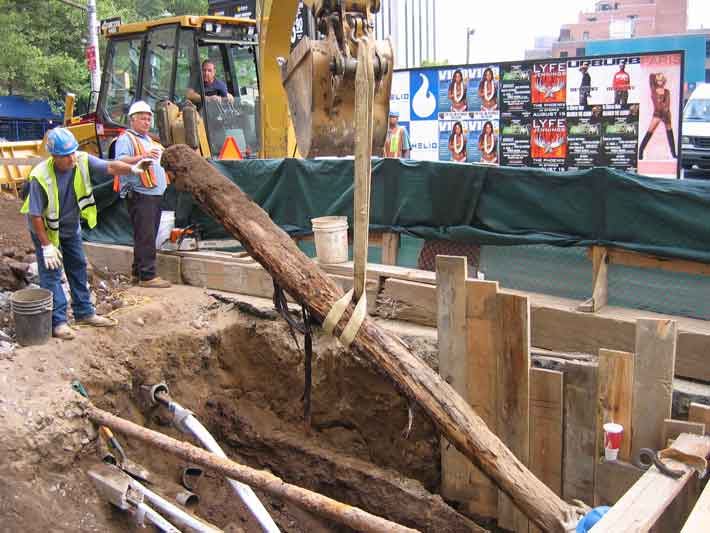
The recent archaeological work at the South Street Seaport has most importantly underscored New York’s multifaceted and complicated relationship with water. On one hand, its magnificent harbor and rivers are the lifeblood of the city and the source of its wealth and industry, while on the other, Manhattan is geographically under-resourced with naturally occurring fresh water. Since the mid-nineteenth century and the completion of the Croton Aqueduct, this has not been a major problem for New Yorkers, but it was during the city’s first few centuries. Lower Manhattan’s early population found it difficult to access a renewable source of drinking water. Residents either dug shallow wells or relied on the Collect Pond, a freshwater pond just north of today’s City Hall Park. By the late eighteenth century these sources were no longer reliable, since Lower Manhattan’s well water was often brackish and the Collect Pond had become so polluted by local industries that its water was no longer potable. At some point, the city had to address the problem. During recent efforts to upgrade the South Street Seaport’s modern utilities, workers uncovered New York’s first attempt at a public water-distribution system.
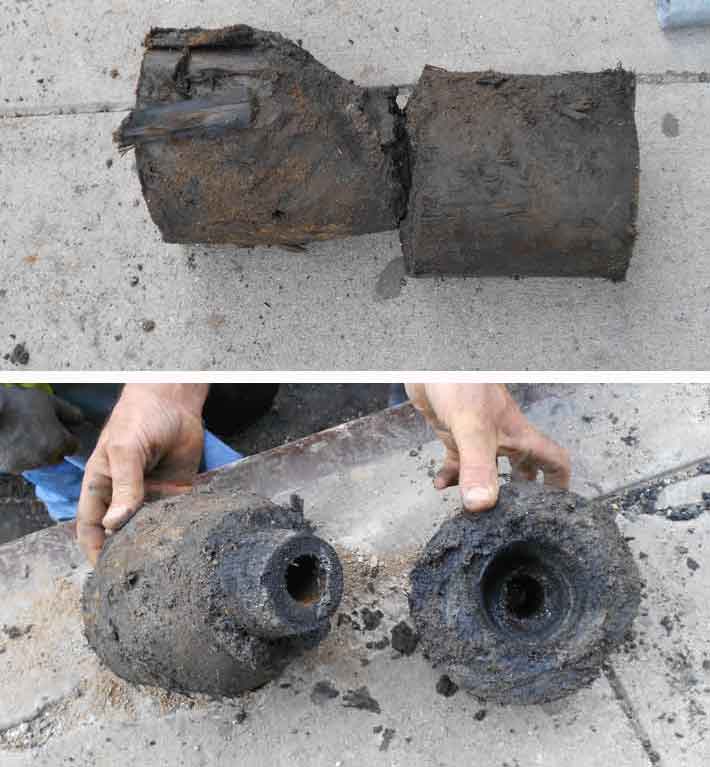
In 2006, Loorya was called to investigate the intersection of Beekman and Pearl Streets, where an old wooden conduit had been unearthed beneath the tangled web of modern utility lines. “It all started with the unanticipated discovery of a wooden water main,” she says. “It turned out to be an intact wooden water pipe that was still connected to an adjacent section of pipe by its metal collar.” The two sections of pipe—actually hollowed-out tree trunks—averaged 13 feet long and 9.5 inches in diameter. The tapered end of one was inserted into the opening of the other and secured with an iron bracket. These wooden pipes, which had remained in situ, were part of Manhattan’s first water system in the early nineteenth century, and are the only surviving example of two wholly intact and attached mains. They are also remnants of an interesting bit of early New York history: In 1799, the Manhattan Company, founded by Aaron Burr, had been established to provide lower New York with clean water. The company pumped water through a system of wooden mains, such as the two that were found, for a cost of five dollars per household per year. The venture was not entirely successful. “If you read contemporary newspaper reports about the Manhattan Company, people were complaining about the lack of water pressure and other various things,” says Loorya. This hardly seemed to interest the Manhattan Company, though, as its priorities lay more with establishing itself as a bank than on efficiently distributing water. It eventually sold its waterworks rights, reinvested the money, and is better known today as JPMorgan Chase & Co.
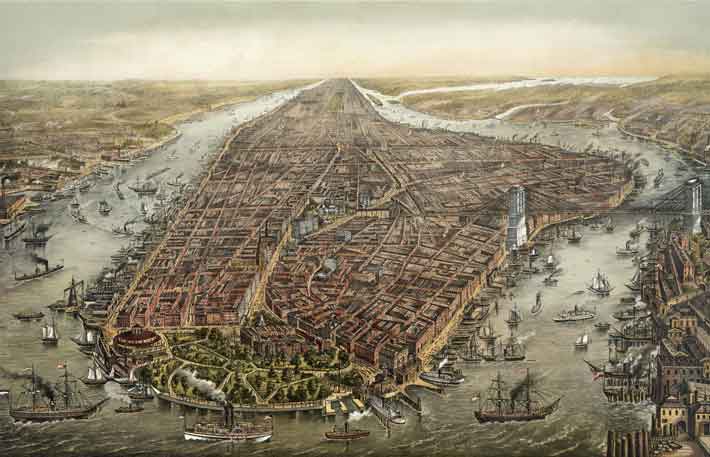
In the late nineteenth century the South Street Seaport began to fall into obsolescence, as larger sea vessels and Erie Canal traffic were better suited to the deeper, more spacious Hudson River side of Manhattan. It was finally revitalized in the second half of the twentieth century with the construction of a tourist-friendly marketplace, only to decline again after 9/11 and in the last decade, in part because of the damage caused by Hurricane Sandy. During the storm the East River surged past South Street, Front Street, and Water Street before stopping near Pearl Street, the original Manhattan shoreline. Now, the South Street Seaport is the focus of a $1.5 billion redevelopment project. Throughout its existence, despite periods of change, when it has been altered and adapted to meet the city’s needs, the Seaport has remained a subtle remnant of an important era in New York City’s early history. For archaeologists, the ebb and flow of the Seaport’s fortunes has provided a look at the story of how this often underappreciated port developed and the people who made it happen. “History—things that have happened in the past, people who have walked these streets in the past—adds to our knowledge of how we got to where we are today,” Loorya says. “The reality is New York City could not have become what it is without the South Street Seaport.”


